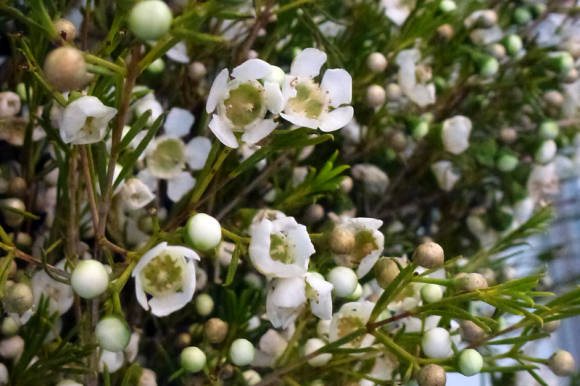
Snowdrops, or galanthuses, are bulbous plants with a pronounced dormant period, which, like tulips and hyacinths, are amenable to forcing in winter. They are driven out for flowering in February-March.
All types of snowdrops are equally suitable for forcing. The most common snowdrops on sale are snowdrops. (Galanthus nivalis) and n. folded (Galanthus plicatus), less often - P. Voronova (Galanthus woronowii).
For forcing, you can use bulbs grown in your own garden, or purchased in a garden center, more than 2 cm in diameter. An important stage in the preparation of the bulbs is their proper storage - the temperature in summer should be within +15 ... + 17 ° C, in September - no higher than + 15 ° C, otherwise medium-sized Galanthus bulbs with thin covering scales will lose some of the moisture.
Landing dates. Landing takes place on October 1st. If there is a need for an earlier date, then the pots with the planted bulbs are stored until October 1 in a dark room at +13 ... + 15оС.
Soil for planting. A mixture of peat and sand 1: 1 with the addition of a small amount of dolomite flour or wood ash for deoxidation.

Landing. Sand is poured at the bottom of the pot as drainage. Most often, even large bulbs give one peduncle in forcing, so they are planted several pieces in one pot (for example, 7 bulbs in a container with a diameter of 10 cm), at a distance of about 1 cm.Cover from above with a layer of substrate of 1-2 cm, abundantly watered.
Cooling period. By the time of planting, flower buds have already formed in the bulbs, but for flowering they require a cooling period of 15-16 weeks at a temperature of + 9 ° C, in the dark (in the refrigerator or better - in the basement). Temperature fluctuations negatively affect the quality of forcing, and high freezing temperatures can lead to a lack of flowering. By the end of the cooling period, the temperature can be reduced to + 5 ° C so that the sprouts do not stretch too much.
During this period, the rooting of the bulbs takes place, so the soil must be kept moderately moist (as a rule, watering will be needed 1-2 times during the cooling period, but it is advisable to check its condition monthly).
Attachment... After about 4 months of cold storage (when planting on October 1 - late January - early February), the pots with snowdrops are exposed to light. By this time, sprouts with a height of 3-4 cm are advanced.It is better to increase the temperature gradually - first, put the plants in a cooler place, with a temperature of + 12 ° C, and after a day - in a warmer place with a temperature of +13 ... + 15 ° C (at night - at two degrees below) and good lighting.
The need for light in snowdrops is modest, therefore, forcing is quite successful on windows with a southern orientation. In case of insufficient natural light or a large number of plants, supplementary lighting with phytolamps corresponding to a power of 60 W per square meter is organized. m, fixed at a height of 30-50 cm from the plants. Daylight hours are 10 hours. The light should come on and off at the same time, so it is convenient to set the photoperiod using a household timer. With insufficient lighting, the leaves and peduncles stretch and hang during forcing, the plants lose their compactness, and the flowers are formed small.

From the moment of attachment, the plants are watered abundantly. For the first watering, it is better to use not plain water, but a 0.2% solution of calcium nitrate, which will make the peduncles more elastic. Plant growth is active, so daily watering is required. If the air in the room is dry, measures should be taken to increase its humidity - put bowls with water or wet expanded clay next to it, put wet towels on the heating batteries, or use a household humidifier. This will have a positive effect on the quality of the plants.
The forcing period is very short, the development is due to the stock of the bulb, therefore, fertilizing is not used - the plants simply do not have time to assimilate them.After 10-14 days flowering occurs, which lasts 4-5 days in cool conditions. To adjust the flowering to a specific date, pots with colored buds can be stored at 0 + 2 ° C in the light.
Note... If there are conditions for cold storage, then you can start cooling earlier, from mid-September (for flowering in early February), but the attachment period with earlier distillation is extended to 3-4 weeks. As spring approaches, the duration of forcing becomes shorter.
Growing bulbs after distillation... The faded flowers are cut off, leaving peduncles, and fed once with a solution of liquid complex fertilizer for bulbous crops. Keep in a bright place with regular watering. In order to get larger bulbs, additional lighting is left for a week. With the onset of yellowing of the leaves, watering is stopped, and when they die off, the pot is stored in a dark place with a temperature of + 17 ° C until autumn planting (bulbs are not suitable for re-forcing).
The bulbs are removed from the pots, cleaned of dry roots and planted at the latest, so that they do not have time to start growing (in late September - early October). Children are planted separately, at a shallower depth. For a new distillation, bulbs from this material can be selected no earlier than after 2 years.









